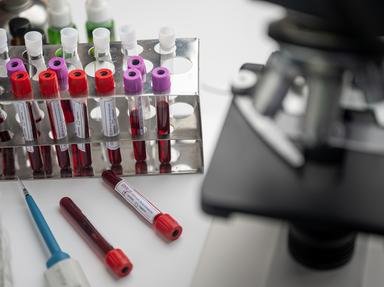Quiz Answer Key and Fun Facts
1. Protein folding can be explained by thermodynamics. Proteins strive to reduce their so called Gibbs version of this quantity in order to make themselves more stable. What quantity is this?
2. Proteins are fluid entities, and can theoretically exist in an astronomical number of conformations due to the rotation of bonds in the peptide backbone. Which Greek names are given to the two types of bond in the peptide backbone that are freely rotatable?
3. The Levinthal Paradox allowed us to logically conclude that protein folding is clearly not a random (trial-and-error) process, but is instead directed. What term is used to describe the theory that folding is directed?
4. The theory of directed folding (at most) only partly explained how proteins folded over such rapid timescales. One finding for how the number of possible conformations could be reduced was that the bond which joins amino acids together is not freely rotatable. What name is given to this bond?
5. Advanced and ingenious approaches to studying protein folding have contributed massively to our knowledge over the last few decades. Techniques such as nuclear magnetic resonance (NMR) have revealed an important quality which further contributes to the solving of the Levinthal Paradox. What is this finding?
6. Another theory which may help to resolve the Levinthal Paradox is that amide groups in peptides "prefer" to interact with one another than with the solvent they are in. Such behaviour positively promotes folding. Which bonds are responsible for the formation of alpha helices and are the basis of this backbone-based theory of protein folding?
7. One of the leading theories of protein folding centres on the "hydrophobic collapse model". Here, there is a rapid and automatic collapse of the protein so as to arrange its hydrophobic residues at the interior, away from the surrounding solvent. This acts to both stabilise the protein and reduce the number of potential conformations. Which of the following amino acids is least likely to be located in the hydrophobic interior of a protein?
8. All of the theories which help to resolve the Levinthal Paradox do so by introducing order and so reduce the number of possible protein conformations. By doing this, however, they decrease the protein's entropy, which is energetically unfavourable. Nonetheless, the *system* entropy does increase in most instances, making folding energetically favourable. How is this possible?
9. Yet another contributing explanation of the Levinthal Paradox tells us that proteins search not for one single native conformation, but for one of several intermediate conformations. Once at this intermediate stage, the protein rapidly and automatically folds into the native state. The existence of a large number of intermediate states therefore decreases the time taken to fold correctly. How is this folding model known?
10. Studies of protein folding have so far been limited to in vitro (rather than in vivo) experiments. One major rate-limiting step of protein folding in vitro is the formation of disulphide bonds. Why is this unlikely to limit folding to the same extent in our bodies?
Source: Author
doublemm
This quiz was reviewed by FunTrivia editor
WesleyCrusher before going online.
Any errors found in FunTrivia content are routinely corrected through our feedback system.
